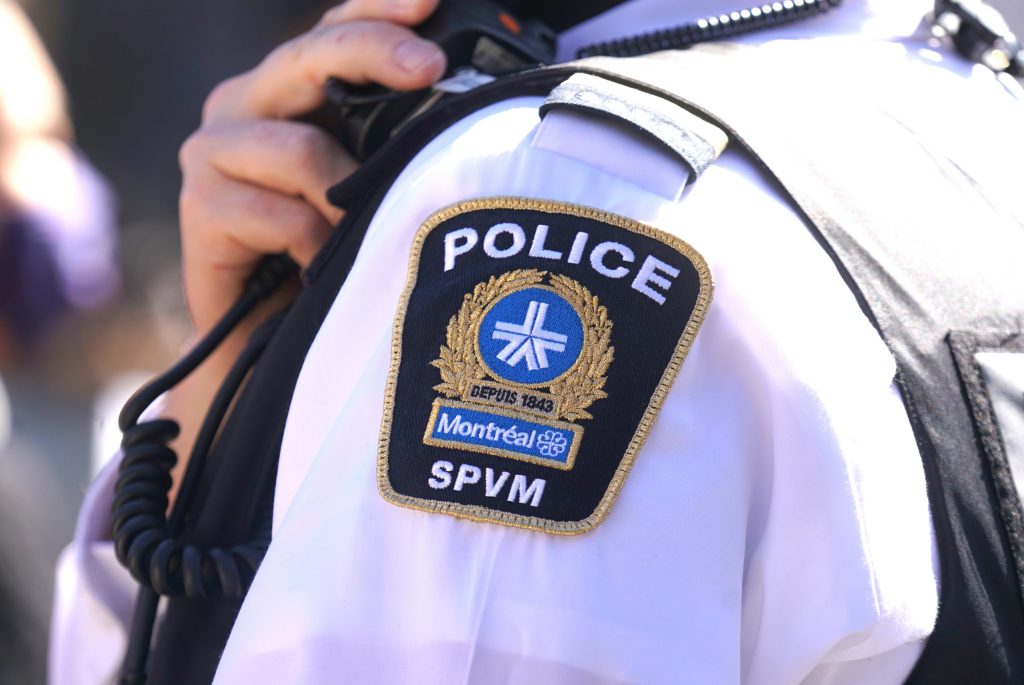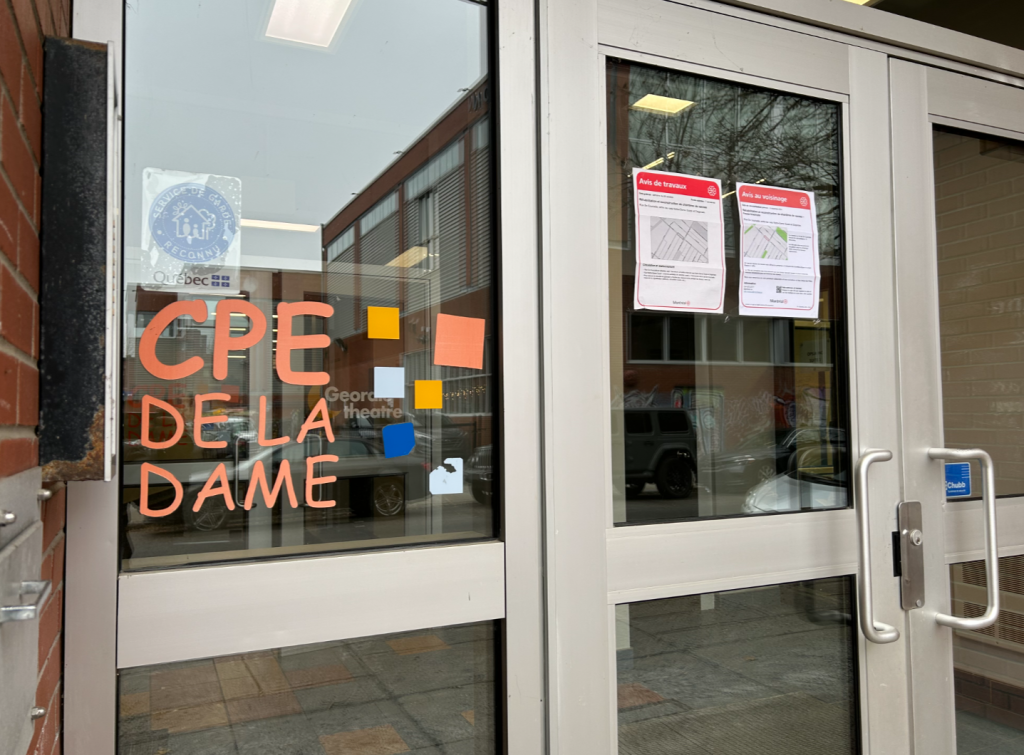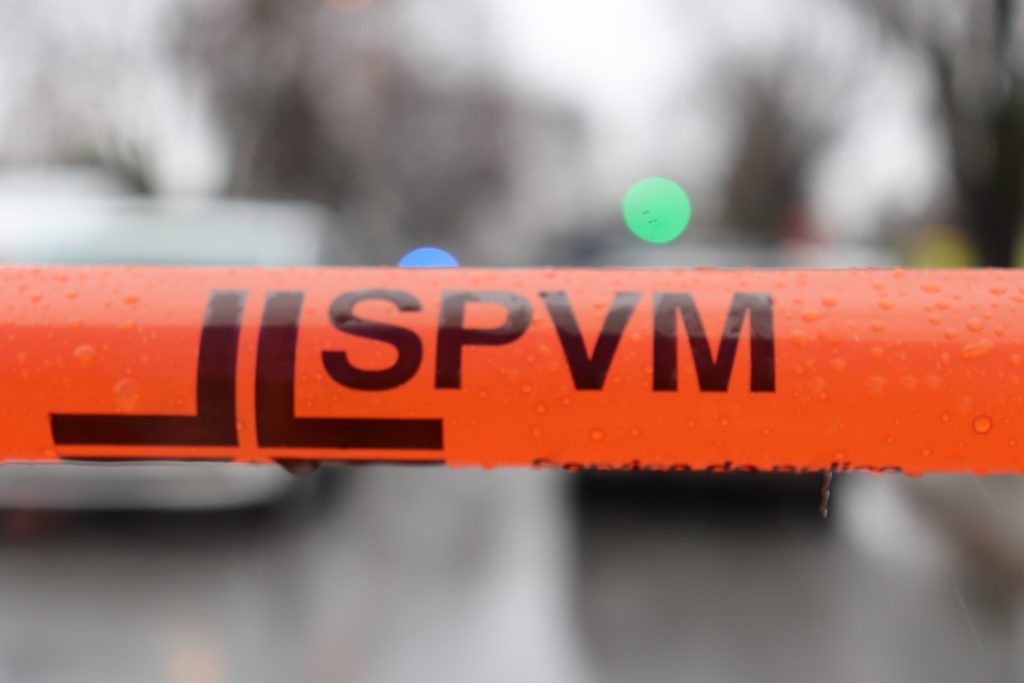‘Geyser’ in Montreal after major water main break floods streets and homes near Jacques-Cartier Bridge
Posted August 16, 2024 8:49 am.
Last Updated August 16, 2024 6:58 pm.
A break in a major underground water main near Montreal’s Jacques-Cartier Bridge sent water gushing down streets and inside homes on Friday morning, forcing the evacuation of nearby buildings. By 11:36 a.m. the city said the break was under control, but repairs will be needed.
Residents south of Sherbrooke in that area, there is a boil water advisory – preventative the city said. Click here for more.
Montreal Mayor Valérie Plante said many residents east of the downtown core woke up around 6 a.m. to firefighters urging them to leave their homes because of flooding risks from the “geyser” that erupted at the corner of René-Lévesque Boulevard and de Lorimier Avenue.
Images showed water gushing from the intersection in the densely populated neighbourhood near the bridge, and witnesses said that at its peak it was shooting 10 metres high.
Authorities warn that the area should be avoided and they recommend that drivers not take the Jacques-Cartier Bridge to enter the city.
City spokesperson Philippe Sabourin estimated that about a 100 homes were flooded. He said that the priority is to ensure the safety of people who live in the neighbourhood.
“Even if the water is receding, we are asking people to let repair crews do their work; don’t cross the danger tape,” Plante told reporters near the site, adding that work to fix the leak will likely take “several hours.”
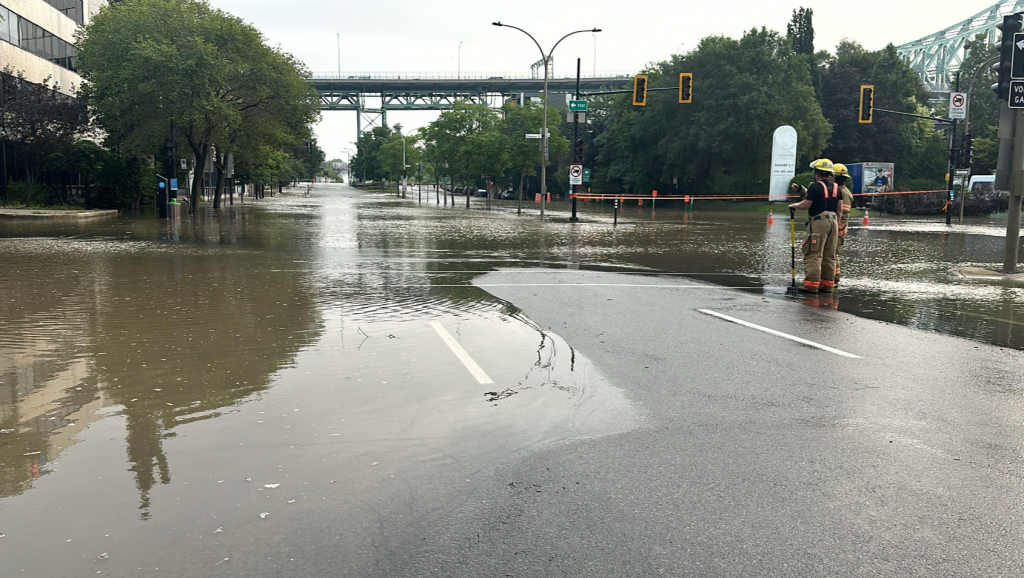


There’s flooding in certain sections of René-Lévesque, Notre-Dame, Viger, Sainte-Catherine, Frontenac and Papineau streets.
The source of the flooding is a pipe more than two metres in diameter installed in 1985, said officials, who explained the asphalt and concrete above the broken section of pipe will need to be excavated before they know how serious the problem is.
But officials said that thanks to redundancies in the city’s network of 4,000 kilometres of pipes, there are no safety issues with drinking water in the flooded district. Every sector of the city is fed with at least two water mains, they said, allowing crews to turn one off and maintain drinking water for the area.
By 10:30 a.m. water had begun receding in the district, but there was still an impressive stream flowing down streets in the neighbourhood.
Martin Guilbault, division chief of the Montreal fire department, said people should stay away from the flooded area until authorities give the green light to return.
“Just because there is less water doesn’t mean the work is done,” he said, explaining that parts of streets could be damaged and give way from all the water that poured over them.
Fire officials didn’t give a precise number of people evacuated, telling reporters that crews visited all the buildings affected and ensured everyone was safe. They said crews still need to evaluate the danger before residents can return home.
Quebec’s hydro utility cut power to the affected area as a precaution, leaving about 13,000 clients without electricity.
Chantal Morissette is the Director of Water Service in Montreal. She said that they have the situation under control and residents will still have access to water if needed.
“We have good water levels in the reservoirs, we have pumps. We really do have a redundant network, and that means we can secure the supply,” she said in French. “So in Montreal, we have very large-diameter pipes that run from the plants and supply the different sectors. I always have at least two supplying each sector of the city. This ensures that we can shut down one pipe while supplying to the other sectors. This is what we call redundancy or looping, so we really do have alternative routes for bringing water to the different parts of the city.”
Morisette explained that the pipe that they need to close is 84 inches long, with four different windows to close in a specific order.
“The last thing we want is for the valve to break. So that’s done in a very controlled way. It takes about 800 revolutions to close a valve. So, each valve takes more than an hour, sometimes two hours to close to be sure it’s under control. That’s why it’s taking so long.”
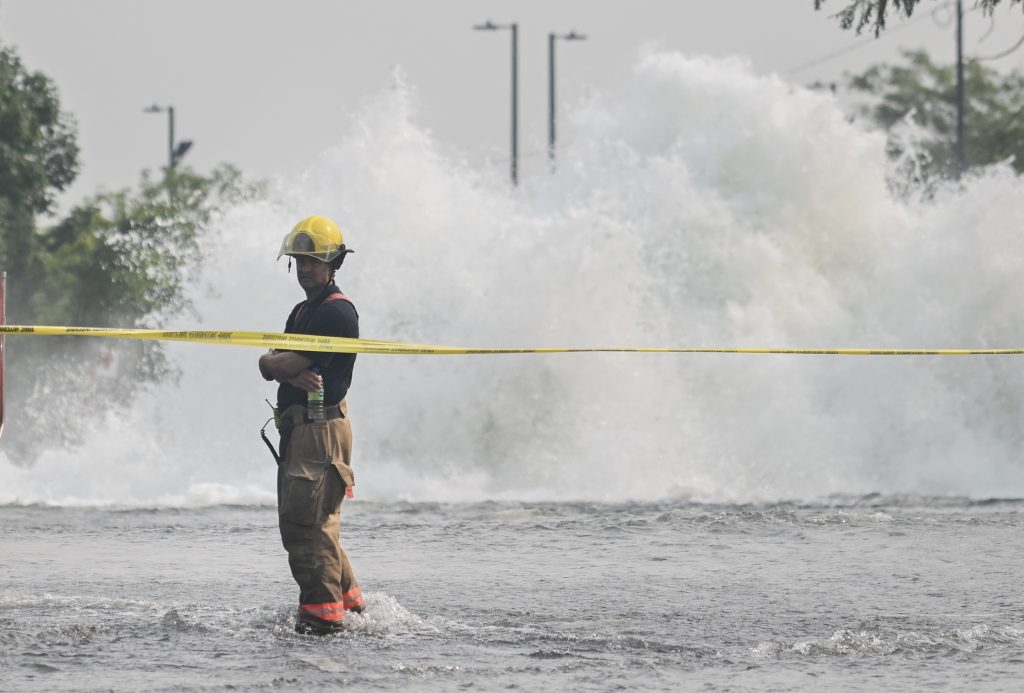

Montreal police officers (SPVM) were dispatched to the scene to close certain streets. They went door to door asking people to evacuate their homes, especially in the basement.
Around 30 firefighters from the Montreal Fire Department (SIM) are also present. They’re asking residents to avoid areas with yellow barriers and tape.
“We can see that the pressure has dropped,” said SIM Chief Martin Guilbault. “After everything has been under control and set up, we will have to go door to door and ensure they can return home safely.”
On X, the SIM asked the population to avoid Sainte-Catherine Street East and De Lorimier Ave. due to “major” flooding.
A Hydro-Québec spokesperson Pascal Poinlane on TVA said they had to cut the power in the area for security purposes and will more power in areas that still have water.
He explained that everything for the power is underground and although it’s meant to resist these events, cutting the power is preventative.
“If you see less water in the streets, it doesn’t mean that the situation has been resolved for the time being,” said Plante. “The situation is certainly under control, but it’s not over yet. It’s difficult mentally and physically. I’d also like to mention that even though the water level has dropped, we’re really asking the public to respect the perimeters so that the SIM and city teams can repair the leak.”
The Red Cross, who’s been helping the city since last week’s floods, will be relocating citizens who need a dry place to sleep tonight.
SPVM Spokesperson Jean-Pierre Braban noted that motorists from the South Shore who planned to use the Jacques-Cartier Bridge to enter Montreal on Friday morning choose another route.
“A lot of water has accumulated in the area,” he said. “We are asking citizens, if they can, to avoid the area for the next few hours, and as for the Jacques-Cartier Bridge, to take another alternative to come to Montreal.”
Several STM bus lines were also diverted from the area.


